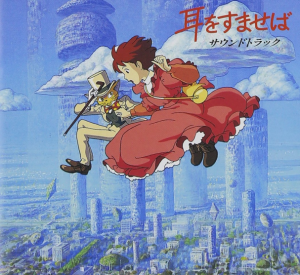In a scene from Whisper of the Heart, the 1995 Studio Ghibli classic, 14-year-old Shizuku is discovering her classmate Seiji’s violin-making workshop. As they discuss his dreams of studying the craft in the fabled Italian violin making town of Cremona, and thereby following the calling of his grandfather, they spontaneously break into song. Soon, Seiji’s grandfather enters the room with his musician friends, brightening the children’s faces and providing the exquisite instrumental backing that gives birth to a scene filled with understated beauty.
Whisper of the Heart was the only Studio Ghibli film directed by Yoshifumi Kondo before his untimely death in 1998, at the age of 47. The film, which was an adaptation of a story by famed Manga artist Aoi Hiragi, with a screenplay written by Ghibli’s legendary co-founder Hayao Miyazaki, became the highest grossing film of 1995 in Japan.
Twenty-five years later, it remains much beloved, and continues to enchant a new generation of audiences with its addition to the collections of various international streaming services.
The film retained many of the characteristic elements of Ghibli filmmaking, including female protagonists with strong inner cores, a celebration of free spiritedness and dedication, and a dignified treatment of the emotions associated with a character’s coming of age. With Kondo at the helm, the movie inculcated many layers of observation, elegantly capturing the living Tokyo Tama cityscape of the time, from wandering neighborhood cats to distant trains. The hidden paths and narrow streets of suburban Tokyo became the setting for a tribute to the serene little wonders of contemporary life.
Kondo had worked at Studio Ghibli for eight years prior to the release of Whisper of the Heart, and had earned significant institutional trust within the studio. His role as an animation director for 1991’s Only Yesterday and 1992’s Porco Rosso, directed by the studio’s co-founders Isao Takahata and Hayao Miyazaki, respectively, enhanced his reputation as an invaluable member, belonging to the studio’s creative helm. The sensitivity and detail with which both films handled their narratives and historical contexts contributed significantly to Ghibli’s strengthening international reputation and Kondo’s positioning as a potential successor to the studio’s leadership.
After Kondo’s sudden death from a heart aneurysm, the Japanese anime industry’s notorious working hours and conditions came under intense scrutiny. Despite Miyazaki’s and Takahata’s reputation for fighting to improve the industry’s conditions, and attain increased wages for members of the anime community, a controversial new book by Ghibli producer Toshio Suzuki acknowledged that the pressures of working for Ghibli may have contributed to Kondo’s fate. This has since been disputed by former Ghibli production staff, who have claimed that working at Ghibli did not directly lead to Kondo’s death, but that the prevailing realities of the Japanese anime industry at the time may have contributed to it.
Kondo’s death led to Miyazaki temporarily announcing his retirement after the release of the much-acclaimed Princess Mononoke in 1997. He later rescinded his decision and returned to the studio, with his next work — 2001’s Spirited Away – winning an Academy award. Spirited Away remains among the Studio Ghibli’s most renowned films; in 2017 it was rated the second greatest film of the 21st century by the New York Times.
Studio Ghibli continues to evoke strong loyalty among a generation that situates the studio’s output firmly in the contours of their childhood imaginations and experiences. It has also started reaching out to a newer audience, keeping up its contribution to Japanese soft power and tourism, with a theme park dedicated to the studio’s characters set to be opened in 2022.
Yoshifumi Kondo may not have had the opportunity to play a larger part in the studio’s extraordinary success, but the enduring allure of Whisper of the Heart will ensure that his name remains entrenched in the Ghibli story.
Kiran Mohandas Menon has written on international law, politics, and culture for various publications, including The Diplomat.

































